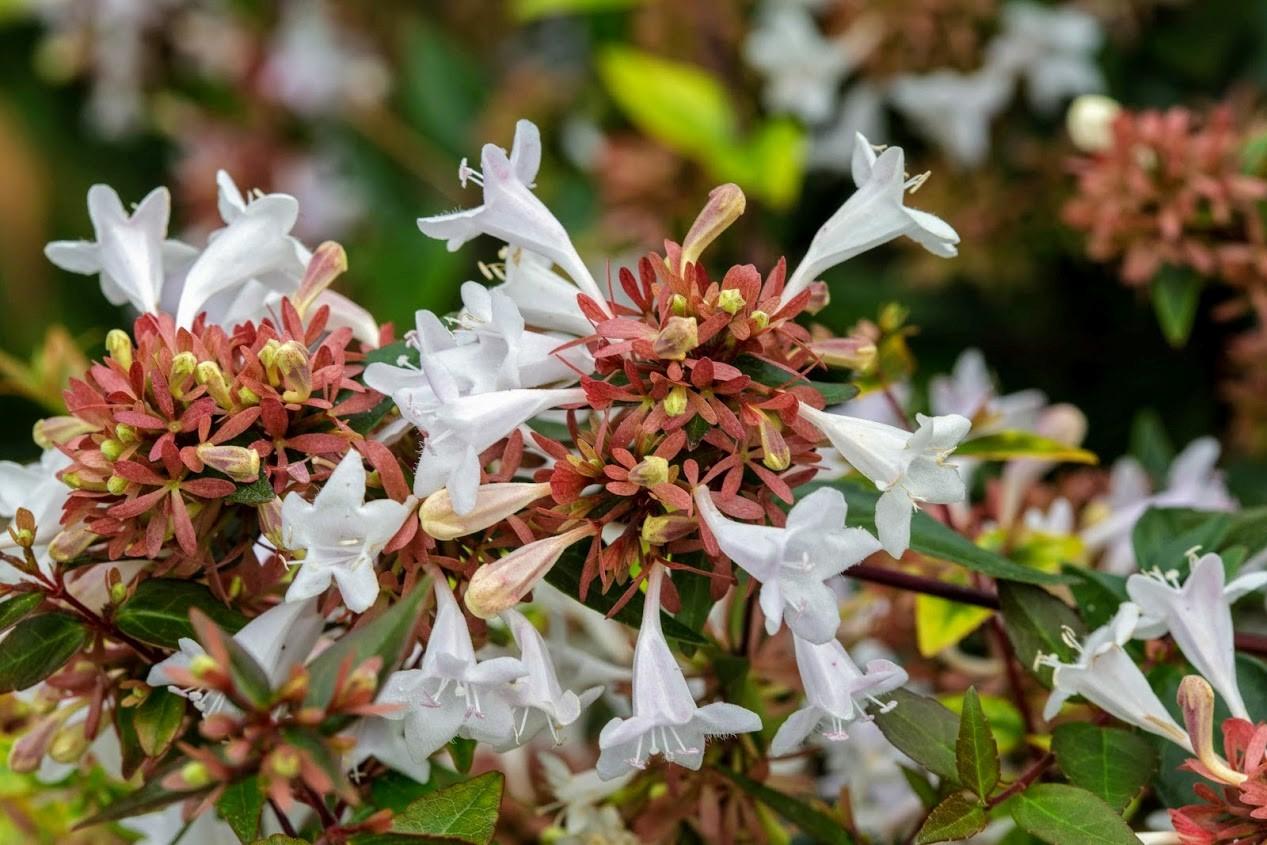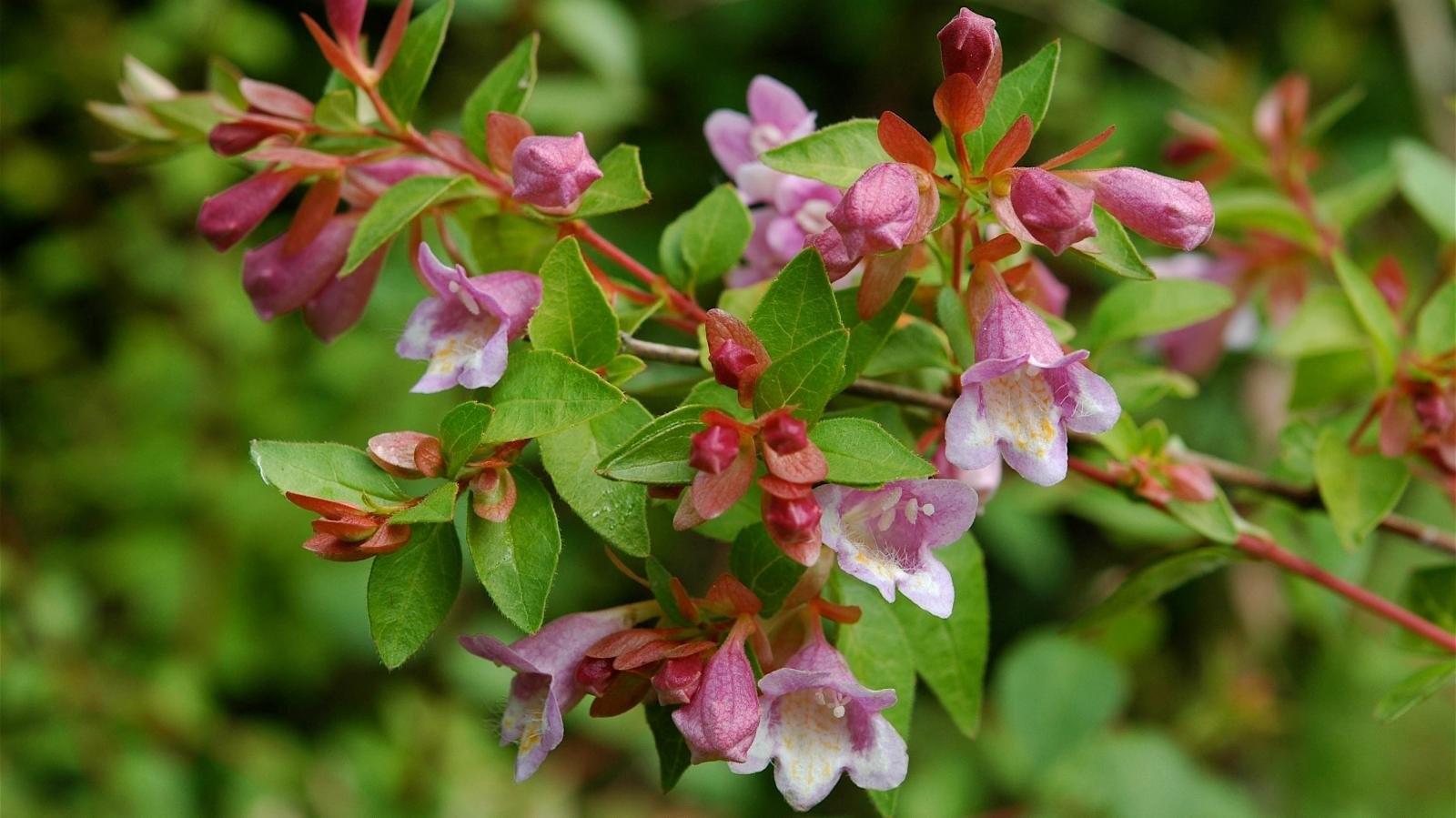Content
Among the variety of plants used in decorating green areas, abelia deserves special attention. The culture is a genus with more than 30 species. Using and combining them, the gardener will be able to form a hedge or an incredibly picturesque composition on his site.
Description of Abelia with photo
Not only residents of private houses are involved in growing abelia. The plant blooms well in the apartment. Its homeland is considered to be the southern part of Asia. Most representatives of the species are shrubs. The foliage and branches are densely located, leaving no chance for the animal to pass through them.

With frequent contact with sunlight, burns may appear on the leaves of the plant.
There are also tree-like varieties of abelia; the plant can reach from 150 to 400 cm in height. With indoor cultivation, the indicators are usually lower. There is one similarity between the species - the splendor of flowering.During the formation of the petals, the culture gives off the aroma of honeysuckle, which is not surprising - it belongs to the family of the same name.
The flowers are grouped in panicles located at the ends of the shoots. Depending on the variety, abelia may have different colors.

Some plants have purple petals, others yellow, others white, red, and so on.
The buds are clearly visible against the background of a fence or young grass. The fruit is a single seed. The leaves are xiphoid or oval in shape, located on the stems opposite each other.
Types and varieties
It can be difficult for novice gardeners to navigate the variety of types and varieties of abelia. All of them have unique features: shape, color, structure of leaves and buds.
Abelia grandiflora (large-flowered)
Its qualities directly depend on temperature conditions. In the southern regions, the crop is an evergreen plant, and in mid-latitudes it is deciduous. When grown in an artificial environment, it forms thin, downward-facing branches.
The bark of young abelia has a unique pinkish tint, which turns brown with age. The buds are collected in groups of five. Flowering lasts from late spring to early autumn.

Grandiflora was obtained by crossing the varieties Uniflora and Kinenzis
Abelia chinensis
When cultivated in open ground it grows up to 200 cm in height. It is distinguished by weeping branches and foliage with a pointed tip. During flowering, dozens of white buds are formed, which, after opening, are covered with unusual reddish patterns.

The Chinese variety has very dense leaf blades with a glossy reflective layer
Abelia korean
Quite a spreading plant with strong branches. Thanks to this feature, designers use Korean abelia to create green hedges. Long, toothy leaves are distributed throughout the stem. Young shoots have a brown tint, which then turns into gray.
The plant overwinters quietly in the harsh Russian winter. This is the only specimen that can do this. Therefore, seeds are often used for growing in open ground.

Temperature changes of more than 7 °C can lead to heavy leaf fall
Abelia profusely blooming
The large leaves are shaped like a spear point. The abundantly flowering abelia is an evergreen variety. The inflorescences resemble a small funnel. Small petals are concentrated in them.

For profusely flowering abelia, drafts are worse than for other varieties
Abelia triflora
Botanists called the plant three-flowered because of the number of petals. Although there are few of them, the buds are densely dispersed. The shrub is characterized by highly tortuosity of branches. Thick leathery leaves are formed on the latter.

The plant forms massive shrubs that can be used to zone different areas
Abelia mosanica
Among all its relatives, Abelia Mosanskaya has the earliest flowering period. Its buds have a tubular structure and are collected in large inflorescences. Gardeners note a pleasant aroma reminiscent of young jasmine. This is one of the most frost-resistant plants.

The edges of the petals of Abelia mosan always look inward - this is its distinctive feature
Abelius Schumann
Ornamental shrub with well-traced seasonality. Closer to winter, the plant sheds its leaves. The petals are lilac in color.

The plant reacts sharply to high air humidity
Planting in open ground
If you want to grow a large spreading shrub, the material is planted in open ground. For cultivation in the Moscow region, you should pay attention to winter-hardy varieties. If abelia is grown in an apartment, this does not matter.
Regardless of the variety, the plant prefers a lot of sun. It is important to prevent stagnation of water and the penetration of drafts.
The bottom of the pit is fertilized with a mixture of peat and compost. The seedling should not have too long shoots. If there are any, trim them. The roots are dispersed over the area of the planting hole, simultaneously sprinkled with substrate. Then the plant is watered abundantly and a layer of mulch is formed.
Abelia care
The young seedling is moistened twice a month. During dry periods, the procedure can be performed more often. In October, watering is stopped. In the second year, the plant's roots penetrate deep into the soil, so it no longer needs moisture. The exception is short-term irrigation during heat waves.
As for fertilizing, additives are applied once a year during the period of bud formation. The soil is saturated with organic matter, and the tree trunk area is sprinkled with compost. After this, the soil is carefully dug up so that the plant has more oxygen.

Botanists recommend growing abelia at temperatures from 14 to 28 °C
The only thing that may cause difficulties is pruning. If you neglect the work, the crown will grow asymmetrical.Formation is carried out in the spring, when abelia has not yet formed buds. In order for the flowering to be lush, you need to promptly remove old withered branches and flowers. The second pruning is done in the fall.
If we talk about growing in mid-latitudes, even the variegated Korean abelia with good winter hardiness requires shelter. It is necessary regardless of the age of the plant. Abelia is covered with agrovolk or spruce branches.
Methods for propagating abelia
The best material for propagation is root shoots. To do this, they dig it up in March-April, trying to capture a particle of the mother root. The sample is planted in another place.
Cuttings are practiced no less often. For this purpose, slightly woody shoots are used. Samples begin to be collected in September or August, that is, after flowering has ended. They are rooted at home, after which the plant is transplanted to a permanent place.

Most variegated plants do not thrive in mid-Russian latitudes
Pests and diseases
Abelia can suffer from root rot or anthracnose. If you do not monitor the temperature, powdery mildew will appear. At the first symptoms, the bush is sprayed with fungicides.
Abelia domestica may stop blooming. This is a sign of lack of sunlight. Cultivation in alkaline soil contributes to a decrease in immunity and the appearance of chlorosis.
Pests are: scale insects, spider mites, aphids. In all cases, they are treated with insecticides.
Abelia in landscape design
The plant is used to decorate recreation areas. It looks great as a green hedge along the perimeter of the garden.It is important to take into account the shape and degree of crown growth and carry out regular pruning.

Tree-like plants are very popular in Korea and China.

Planting is carried out at a distance of 200-250 cm from each other
Designers advise trying a combination with other fragrant bushes, such as hydrangea or clematis. Most owners plant abelia together with perennials: daisies, forget-me-nots, marigolds and other plants.

The shrub tolerates high gas pollution well, therefore it is used in city landscaping
Conclusion
Abelia is an ornamental shrub that has earned enormous popularity in the East. With its help, original compositions are created, but the plant is better used as a background - a hedge.
Reviews of the abelia bush








